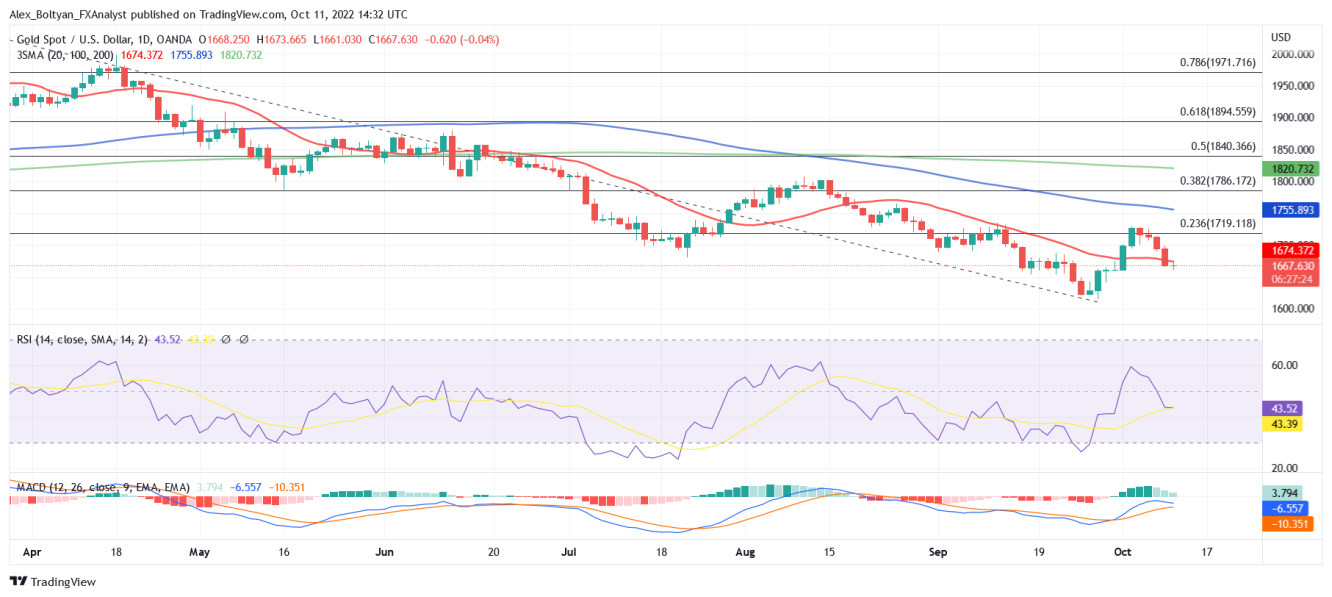Gold prices tread water on Tuesday following four consecutive daily losses as the dollar’s rally lost its steam amid retreating U.S. Treasury yields.
Spot gold, XAU/USD, is currently trading at the $1,670 area, virtually unchanged on the day, having hit and bounced off from a weekly low of $1,661 earlier on the day.
Gold’s upside potential remains limited as Fed officials continue the drumbeat of hawkish comments. Chicago’s Fed Charles L. Evans said there is “great uncertainty about how restrictive policy must become” and added that he sees the nominal funds rate rising to a bit above 4.5% early next year.
Elsewhere, Lael Brainard claimed that “monetary policy will be restrictive for some time to ensure that inflation moves back to target over time” and confirmed that the pace and size of future hikes would remain data-dependent to assess the effects of the contractive policies on economic activity, employment, and inflation.
While the United States 10-Year yield is trading at the 3.92% level, nearly 1% down on the session, the metal has been unable to pick up momentum as investors brace themselves for a busy week.
September’s Consumer Price Index (CPI) data will be released on Thursday, with markets expecting the headline inflation to decelerate to 8.1% and acceleration of core inflation from August’s 6.3% to 6.5% YoY. September’s Producer Price Index (PPI) data will be published on Wednesday.

From a technical perspective, the XAU/USD maintains a short-term bearish bias, with the price trading below its main moving averages. Technical indicators point to dwindling buying pressure on the daily chart. The RSI remains flat below its midline, while the MACD continues to print green but decreasing bars.
On the upside, immediate resistance is seen in the 20-day SMA at $1,674, followed by the more relevant $1,700 psychological level and then the $1,730 area. On the other hand, the loss of the $1,660 support zone would expose the $1,640 area en route to the cycle lows at $1,615.
